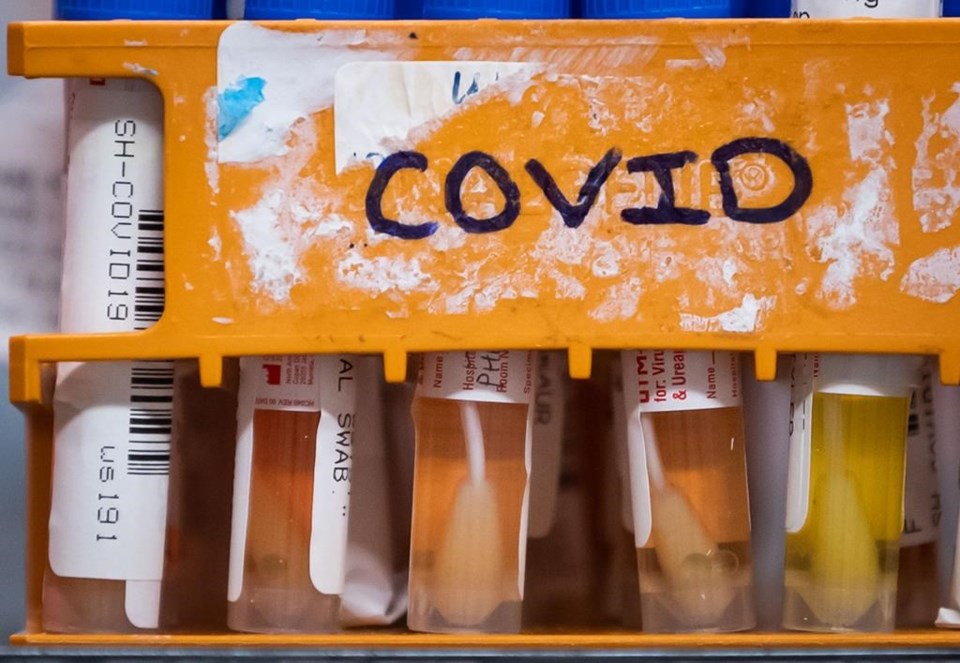COVID-19 infections may be slowly starting to rise again in Canada, new data from the Public Health Agency of Canada (PHAC) suggests.
"There are signs of continued fluctuations in some COVID-19 activity indicators after a long period of gradual decline," the agency's online epidemiology update said on Tuesday.
"This may be an early sign of increases in activity."
COVID-19 activity is still low to moderate across the provinces and territories, the update said.
Dr. Allison McGeer, an infectious diseases specialist at Mount Sinai Hospital in Toronto, said COVID-19 cases are on the rise in the U.S. and in other parts of the world.
"I think the solid evidence is that COVID is coming back (in Canada)," she said, noting that noticeable increased activity likely won't happen for "another few weeks at least."
Public health experts are using wastewater surveillance across the country and COVID-19 test positivity rates to determine the level of COVID-19 activity.
Although COVID PCR testing in the general public has largely stopped, people are still tested if they are hospitalized or if they have COVID symptoms and are potential candidates for Paxlovid treatment, McGeer said.
Waning immunity as vaccines wear off, the presence of new subvariants and the fact that people will be moving indoors in the fall are all factors that will play a role in the rise of cases, she said.
XBB subvariants of the Omicron variant accounted for 99 per cent of COVID-19 cases that were genetically sequenced the week of July 16, the Public Health Agency of Canada said.
The "daughter" of the XBB.1 family, EG.5, is expected to start dominating in the coming weeks, said Dawn Bowdish, an immunologist at McMaster University in Hamilton, Ont.
EG.5 appears to have more immunity-evading properties than other variants and is therefore likely to be more contagious, Bowdish said.
There's no sign that EG.5 is more virulent, meaning more likely to cause serious illness among otherwise healthy people, she said.
But the fact it's more contagious, Bowdish said, means it's still a significant threat.
“One of the universal truths in infectious disease is having a more contagious variant that's a little bit less virulent actually causes more death and disability than a highly virulent one that's less contagious because it can just find those vulnerable people," she said.
More people could be vulnerable this fall, Bowdish said, because many people in Canada didn't get the bivalent booster shot, which provided protection against Omicron and its subvariants.
Also, as a member of the Omicron family, EG.5 "does not seem to be any less likely to cause long COVID or long-term chronic health issues than the earlier variants," she said.
An increase in COVID-19 cases will once again take the heaviest toll on seniors and people who are immunocompromised, both Bowdish and McGeer said.
"Vaccination this fall will preserve the lives and health of older adults," McGeer said.
Because the updated vaccines against COVID-19 expected this fall were developed to target Omicron's XBB subvariant family, they will likely "have really great efficacy at both preventing severe infection, but also at least temporarily reducing the risk of symptomatic disease," Bowdish said.
In an email, the Public Health Agency of Canada said it's not known for sure when a significant rise in cases might happen.
"Although seasonality of the SARS-CoV-2 virus has not been established, other respiratory viruses such as influenza and respiratory syncytial virus (RSV) typically increase in the fall and winter months," a spokesperson said.
"COVID-19 vaccination can help increase protection and reduce the impact of COVID-19 on the health system while these other viruses are circulating."
It's not yet known when the new formulations of COVID-19 vaccines will become available.
In addition to getting the vaccine when it becomes available, public health agencies across the country continue to advise staying home when feeling sick as a protective measure against spreading COVID-19.
Mask mandates across Canada have largely been lifted, but are still in place in patient-care areas of many hospitals, especially in the Greater Toronto Area.
This report by The Canadian Press was first published Aug. 15, 2023.
Canadian Press health coverage receives support through a partnership with the Canadian Medical Association. CP is solely responsible for this content.
Nicole Ireland, The Canadian Press



